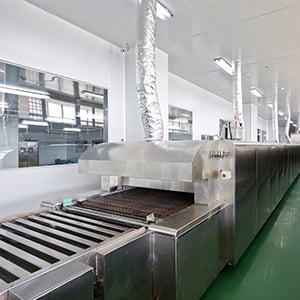
In Maslow’s hierarchy of needs, the fundamental physical need is physiological. Metabolic requirements, air, and water supplement the internal functioning, while clothing and shelter fulfill the necessary external protection from the elements. And although humans can make the clothing and shelter, food is the only internal requirement that can be artificially produced. Homogenization is increasingly used as a method of food production because of its various advantages over other methods. Keep reading to learn about some of the higher-impact advantages of homogenization and how your food production process can benefit.
Improves Food Processing Outcomes
A consumer’s decision to purchase one food brand over another is largely based on its consistency, taste, and appearance. The processing method that dictates these factors should, therefore, be carefully considered, with homogenization being most common. In 2013, tomato juice was shown to have improved consistency and viscosity because of high pressure homogenization, which suspended particles during processing. The simple ability to improve food processing outcomes can really elevate a product above competitors to increased company sales.
Highly Effective as a Food Preservation Method
Like with food outcomes, high pressure homogenizers are also incredibly effective as a food preservation method. In fact, the method continues to increase in popularity over traditional heat treatment for its high level of function. The reason for this is that although both high pressure and heat can kill harmful microorganisms, heat exposure kills some of the food’s naturally-occurring nutrients- while high pressure homogenization leaves them untouched and ready for consumption.
Extends Shelf Life
Related to food preservation in terms of chemical stability is shelf life, or the ability of a food to stay fresh before consumption. The intensive pressure applied by a high-pressure homogenizer causes most foods to attain more stable chemical structures; this allows for a longer period of freshness than would otherwise be possible, especially compared with foods comprised of larger particles.
BEE brand homogenizers: High Quality Particle Size Reduction Equipment
A food’s ability to have its intended effect can be attributed to a wide variety of factors, in particular the size of its particles and consistency in particle size. Every food manufacturer should therefore consider each as food production processes are established. The first step in synthesizing a food product with high bioavailability is purchasing equipment that will achieve consistent particle size distribution. One such example is the high-pressure homogenizer by Pion. Our products are trusted by researchers and lab managers around the world for key benefits, such as production of nano/micro emulsions, dispersions, and suspensions; importantly, this equipment can achieve consistent particle sizes at or below 100 nm, a key benefit for any product coming from the food industry.

